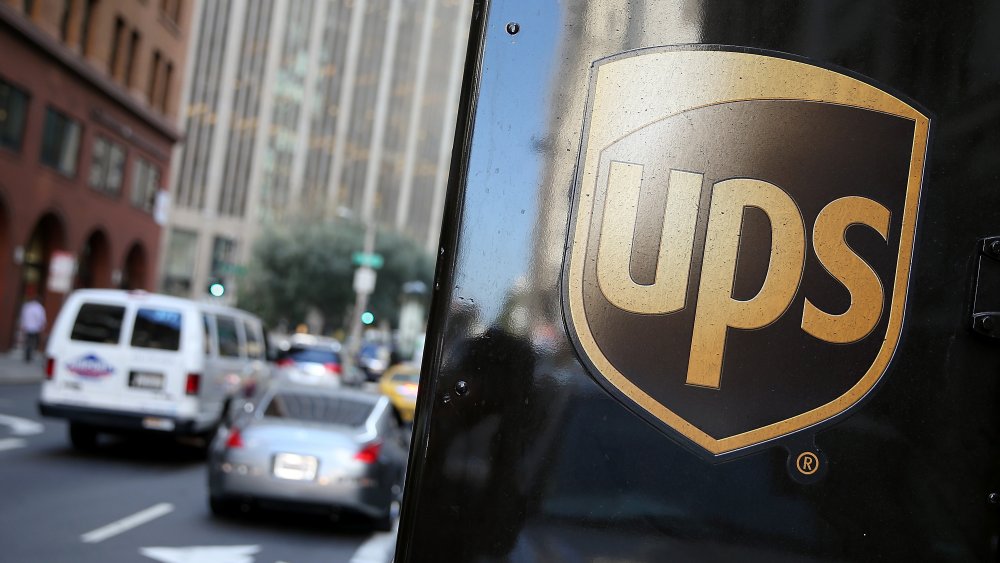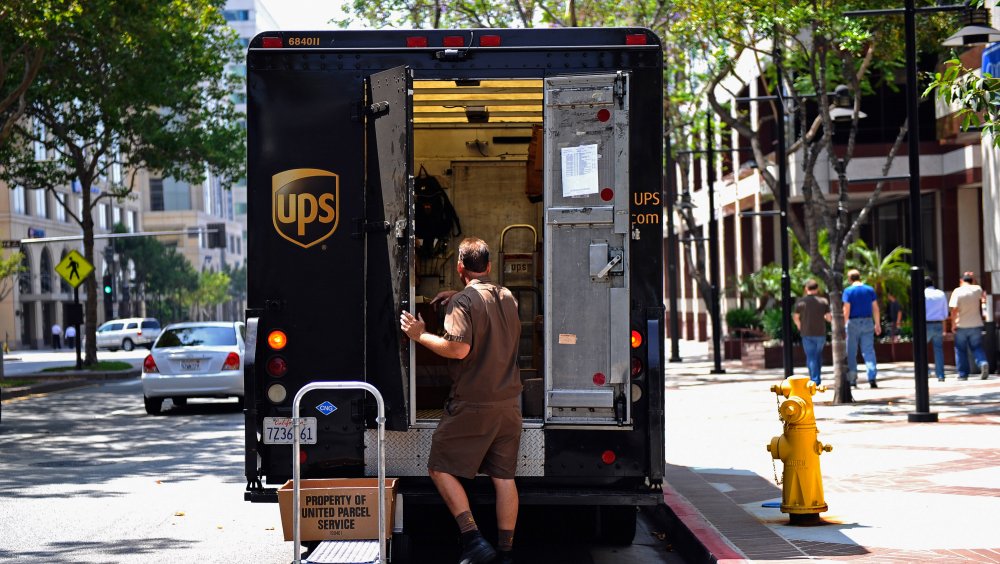Here's How Much UPS Drivers Really Get Paid
The big brown UPS trucks sure are hard to miss. Touting a bright yellow-and-brown UPS logo with uniformed drivers to match, the United Parcel Service seemingly delivers packages across the country at lightning speed. In fact, the company describes itself as "a global network of movement," according to Trucking Truth, a distinction it has been working towards since it began as American Messenger Company in Seattle, Washington in 1907.
But with such an expansive presence and dedicated fleet of drivers comes an air of mystery. Whether you're driving behind a UPS truck and questioning why their drivers never make left turns -– or wondering why UPS trucks always leave the doors open –- there's a lot of secrets to unpack with these guys, with one of the biggest mysteries remaining: how much do UPS drivers actually make?
Hint: the number can vary greatly
Thankfully, UPS has made public just how much they pay their drivers, and how they structure pay increases over time. And it's pretty darn good. According to the latest National Master United Parcel Service agreement on the Teamsters website (Article 41, to be exact), the wage progression for full-time employees entering a package car driving role starts at $21 hourly, and increases annually over a 4-year period before reaching the top rate. After the first year, that $21 increases to $23, and after another, it increases to $24, to match an even 24 months of work.
For those who have stuck around til year three, things jump up to $28.75, before hitting the top rate of $30.64. However, this doesn't factor in general wage increases, which bump the driver pay even higher. For the five year UPS/Teamster contract, which began in 2018, annual general wage increases started at 70 cents and progress to $1 by 2022. All told, a driver who has been with the company for four or more years should make close to $40 hourly, falling in line with estimates for the average driver's hourly rate provided by Transport Topics ($36) shortly after the contract was agreed upon.
Those numbers would put a full-time, top-rate driver over $70k a year, and that still doesn't factor in overtime. The structure differs slightly for different driver classifications, such as "Article 22.4" type drivers, who moved from a part-time role to full-time, but not by much.
If you put in the years, UPS driving may deliver you to a healthy salary and comfortable retirement. Step one? Make it through UPS boot camp.

